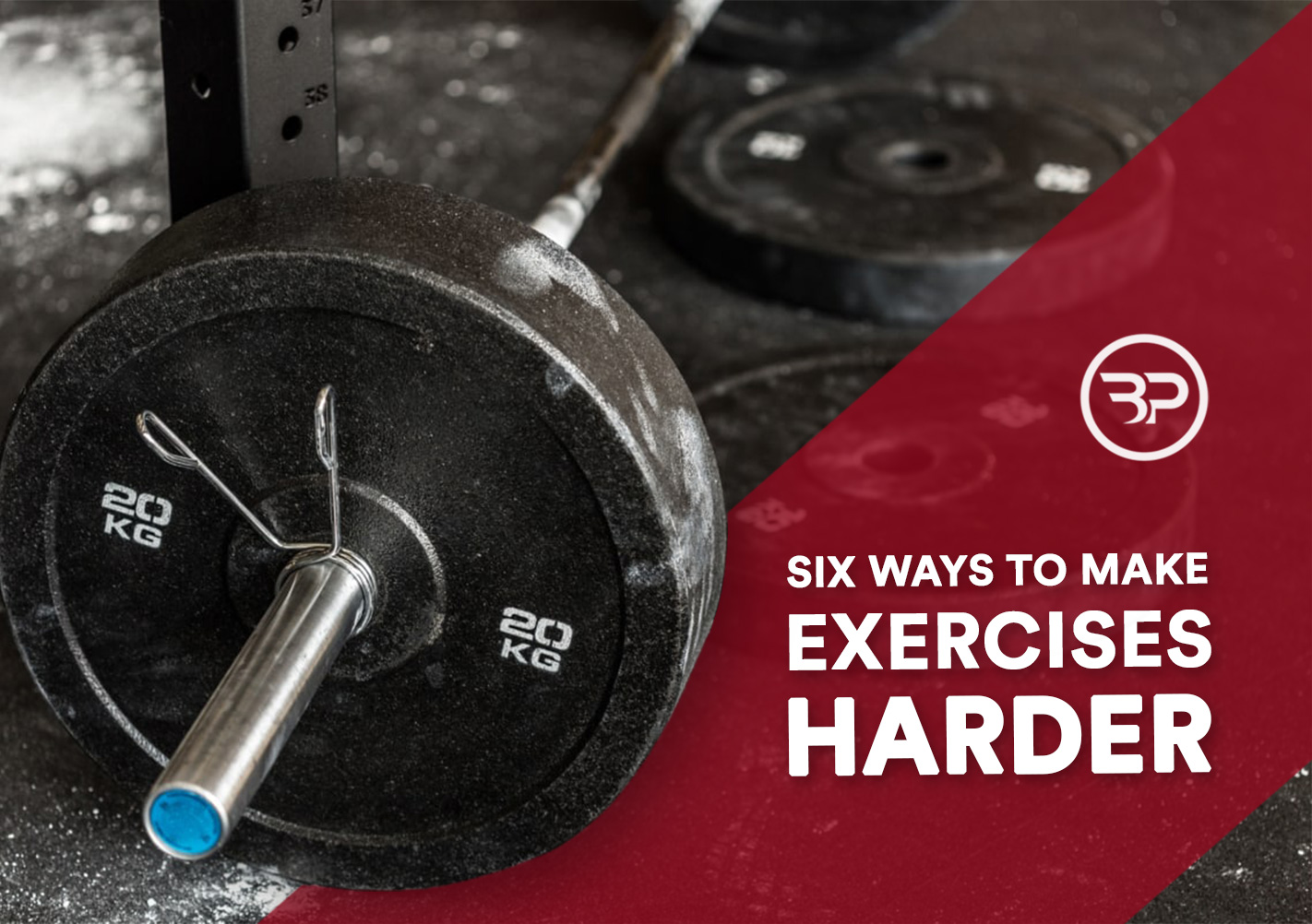Six ways to Make Exercises Harder
January 30, 2016
[This article was Originally Published here on AskMen.com]
Is your current workout not cutting it? I hear you.
Maybe you’re stuck in a busted hotel with a few janky dumbbells and a treadmill.
Or, you’re just a glutton for self-punishment and want to have an intense workout.
But most likely, you’re training has plateaued and you need a kick in the ass to build more lean mass.
Whether you’re traveling and stuck in a poorly equipped gym, or just need to supercharge your training to build more lean muscle there are small tweaks that can make a world of difference in your training.
Whatever the reason, one of these six methods will work for you. No, I’m not talking about completely changing your program; rather, making subtle changes to how you’re performing exercises to get you stronger, leaner, and build some new muscle.
1. Timed Sets
Instead of counting reps, set a timer and work against the clock. This might sound strange, but there’s a powerful benefit. When you’re fatigued you’ll need to maintain a focus on the quality of each rep rather than aiming to finish the set in a certain number of reps.

Even better, timed sets focus on two underrated factors for muscle growth: tension and metabolic stress.
By keeping your muscles under constant tension and stress, you stimulate more muscle damage while building up by-products of muscle contractions (metabolic stress).
Focus on longer duration sets between 30-75 seconds to increase metabolic stress. This allows you to use less weight but keep better focus on each muscular contraction to build more lean muscle.
Try This: Stuck with only a dumbbell for squats? Hold a dumbbell in the goblet position and perform reps for four sets of 40 seconds, staying just shy of locking out at the top of the movement.
2. Increase the Range of Motion
Increasing the range of motion requires muscles and joints to contract and stabilize through a greater range of motion. A greater range of motion requires greater muscle activation to overcome the resistance while also requiring more stability to build an injury resistant body.
Increasing the range of motion makes exercises harder and very effective for building muscle, but your technique must be perfect to reduce injury risk.
Try This: If you’re only using barbells in your training then start using dumbbell movements like a dumbbell bench press. This allows a greater range of motion for each arm while increasing stability demands.
For the lower body, try reverse lunges from a small step or elevating your front foot on a Bulgarian split squat. These methods can breed extreme soreness– proceed with 2-3 sets of 8-12 reps and plan on spending extra time on exercise recovery.
3. Lift Explosively
If you’ve been counting tempo and using slow lifting speeds, then lifting weights explosively can help you build new muscle and athleticism.
No, you won’t feel a crazy burn or pump from these methods, but that doesn’t mean they’re not effective.
Why do they work?
You’ll improve nervous system efficiency and stimulate greater muscular recruitment.
By lifting lighter weights faster or heavy weights with the intent of being explosive you can activate a greater number of muscle fibers during exercise.
In the short term, explosive exercises activate high-threshold motor units (HTMU’s) to recruit more muscle during training. More recruitment means lifting more weight and building more muscle.
Before your next lower body try 3×5 Jump Squats with 60 seconds rest:
Lifting Upper Body? No sweat, give this push-up variation a try for 3×5 with 60 seconds rest.
In the long-term, explosive exercises allow you to recruit more muscle fibers with less effort. This makes it easier to smash heavy weights.
You can maximize this muscular recruitment by lifting heavy, or by lifting, jumping, or throwing lighter stuff faster.
4. Pause at your Weak points
Think back to the last time you saw someone squatting or benching at the gym.
Chances are, they started lowering the weight slowly then “bounced” through their transition, right?
Adding a pause makes exercises harder, especially if you pause at your weak point. Common examples here are the bottom of a squat or near your chest on a bench press, you’re first forced to stabilize your body through its weakest point. This can improve joint stability and strength through the toughest part of lifts to prevent injury.
Further, the pause eliminates one huge factor—elastic energy stored in your ligaments. To overcome the pause, you must generate pure dead-stop strength.
This method requires you to decrease the weight you’re using, but will build tons of pure strength. Once you return back to your usual training, you’ll feel strong, stable, and powerful.
5. Decrease your base of Support:
A narrow base of support requires greater balance and control for a wide range of exercises.
Unilateral exercises like lunges are the first that come to mind, but even modifying typical bilateral exercises like narrowing your stance on squats presents a new muscle recruitment pattern and different muscular activation. That means a slightly different training stimulus to get you out of your rut.
Instead of keeping your feet apart during push-ups and planks bring your feet closer until they’re touching. This decreased base of support creates an extra challenge to stabilize your trunk and hold body position.
6. Metabolic circuits
If you’re stuck in a lousy hotel gym chances are there isn’t equipment besides a few janky dumbbells, a couple machines, and cardio equipment.
In this case, you’ll need to do more with less and focus on training density.
Training density, doing more work in less time, is an ultra-efficient fat loss training method that requires you to pair multiple exercises together with minimal rest between them.
This increases metabolic stress, helping you burn more calories and increasing metabolic stress in your muscles. According to this study in the Journal of Strength and Conditioning Metabolic stress is one of the primary mechanisms of hypertrophy.
When you’re short on time or equipment, create total-body metabolic circuits to make your training more difficult.
Try This: Pick a push, pull, lower body exercise, and core exercise. Let’s say push-up, pull-up, goblet squat, and plank. Perform 4 sets of 10 for each exercise and 30-60 seconds for your plank. Keep rest minimal between exercises.
Six ways to Make Exercises Harder
There is a caveat with making exercises harder– you must nail your technique at all times. After all, just because something is hard, doesn’t mean it’s effective. Luckily, these methods have withstood the test of time —giving you a new training stimulus to force new muscle growth.
Get Stronger, Leaner, and More Athletic
Copyright: bialasiewicz / 123RF Stock Photo








